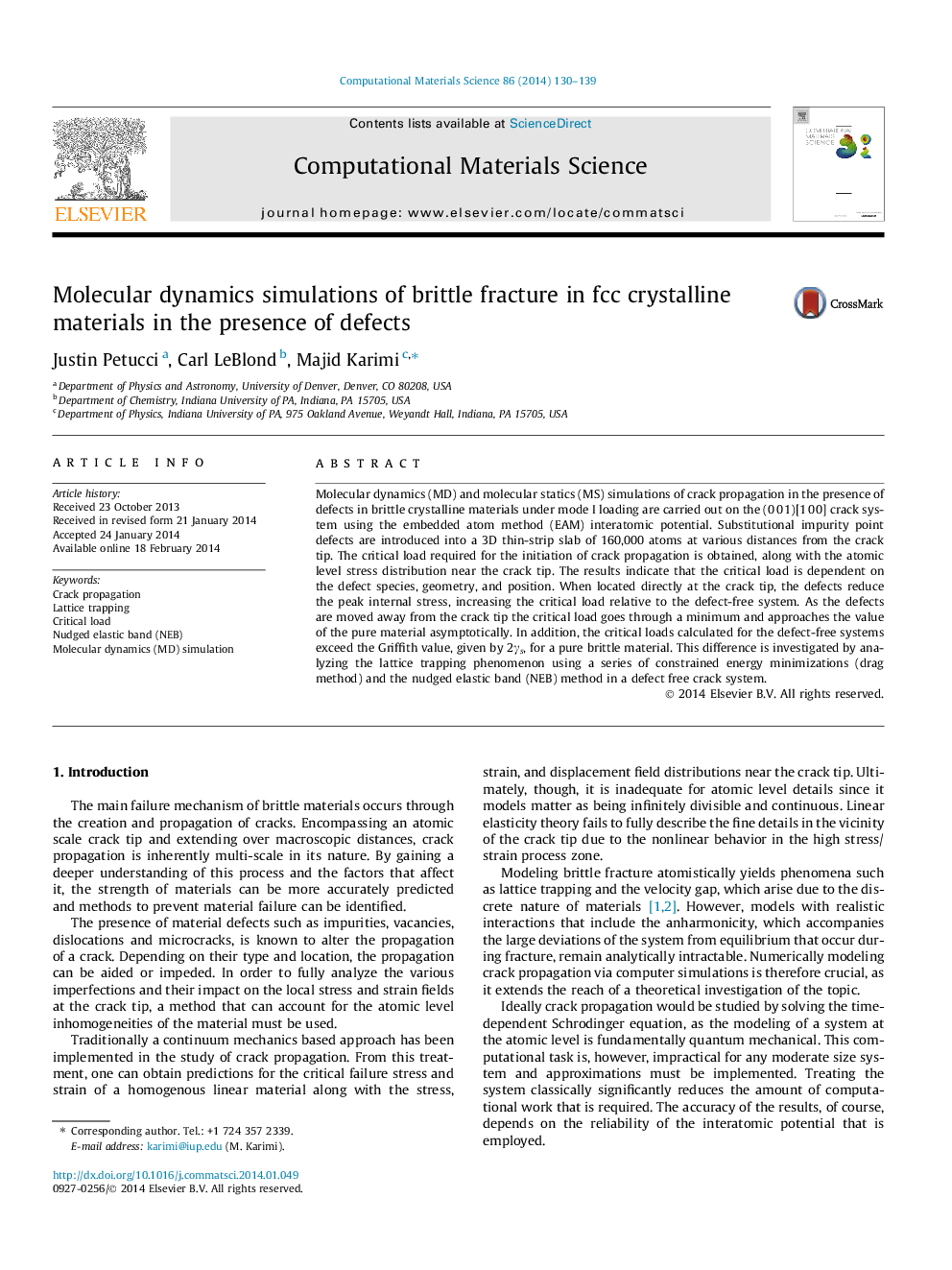| Article ID | Journal | Published Year | Pages | File Type |
|---|---|---|---|---|
| 1560952 | Computational Materials Science | 2014 | 10 Pages |
Abstract
Molecular dynamics (MD) and molecular statics (MS) simulations of crack propagation in the presence of defects in brittle crystalline materials under mode I loading are carried out on the (0 0 1)[1 0 0] crack system using the embedded atom method (EAM) interatomic potential. Substitutional impurity point defects are introduced into a 3D thin-strip slab of 160,000 atoms at various distances from the crack tip. The critical load required for the initiation of crack propagation is obtained, along with the atomic level stress distribution near the crack tip. The results indicate that the critical load is dependent on the defect species, geometry, and position. When located directly at the crack tip, the defects reduce the peak internal stress, increasing the critical load relative to the defect-free system. As the defects are moved away from the crack tip the critical load goes through a minimum and approaches the value of the pure material asymptotically. In addition, the critical loads calculated for the defect-free systems exceed the Griffith value, given by 2γs, for a pure brittle material. This difference is investigated by analyzing the lattice trapping phenomenon using a series of constrained energy minimizations (drag method) and the nudged elastic band (NEB) method in a defect free crack system.
Related Topics
Physical Sciences and Engineering
Engineering
Computational Mechanics
Authors
Justin Petucci, Carl LeBlond, Majid Karimi,
